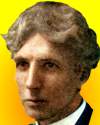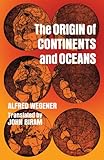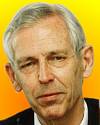 | TODAY IN SCIENCE HISTORY
NEWSLETTER - 1 NOVEMBER |
 On 1 Nov 1868, Robert Kennedy Duncan was born, a Canadian industrial chemist, teacher and populariser of science who was a preeminent writer interpreting science and advocated partnering scientific research and industry to create new and better consumer products. As director of the Mellon Institute of Industrial Research he brought the learning of the university to the service of industry. In fact, he originated the modern idea of industrial research in the university, to bring manufacturing industries and pure science into closer accord. In the article 'Harnessing Science to the Factory' from Popular Mechanics Magazine (1914), examples are given of this synergy between research to solve a problem and the result that improves an industrial product. Well worth your attention, it makes an intriguing and very informative read. On 1 Nov 1868, Robert Kennedy Duncan was born, a Canadian industrial chemist, teacher and populariser of science who was a preeminent writer interpreting science and advocated partnering scientific research and industry to create new and better consumer products. As director of the Mellon Institute of Industrial Research he brought the learning of the university to the service of industry. In fact, he originated the modern idea of industrial research in the university, to bring manufacturing industries and pure science into closer accord. In the article 'Harnessing Science to the Factory' from Popular Mechanics Magazine (1914), examples are given of this synergy between research to solve a problem and the result that improves an industrial product. Well worth your attention, it makes an intriguing and very informative read. |
 On 1 Nov 1880, Alfred Wegener was born, who gave the first extensive evidence in a well-developed hypothesis of continental drift. Today's Science Store pick is: The Origin of Continents and Oceans (Dover Earth Science), by Alfred Wegener. This is truly a first-person classic, one of the most influential, most controversial books in science. Like other truly revolutionary scientific theories, Wegener's idea took years to win general acceptance among scientists. But his classic statement for continental drift survived the initial ridicule. Then as steadily accumulating evidence finally prompted its acceptance (after his death) it initiated the modern theory of plate tectonics - now one of the most important and far-ranging geological theories of all time, with consequences throughout geology, geophysics, oceanography, and paleontology It is available New from $10.58. Used from $4.98. (As of time of writing.). On 1 Nov 1880, Alfred Wegener was born, who gave the first extensive evidence in a well-developed hypothesis of continental drift. Today's Science Store pick is: The Origin of Continents and Oceans (Dover Earth Science), by Alfred Wegener. This is truly a first-person classic, one of the most influential, most controversial books in science. Like other truly revolutionary scientific theories, Wegener's idea took years to win general acceptance among scientists. But his classic statement for continental drift survived the initial ridicule. Then as steadily accumulating evidence finally prompted its acceptance (after his death) it initiated the modern theory of plate tectonics - now one of the most important and far-ranging geological theories of all time, with consequences throughout geology, geophysics, oceanography, and paleontology It is available New from $10.58. Used from $4.98. (As of time of writing.). | | For picks from earlier newsletters, see the Today in Science History Science Store home page. | |
 | Scientists still do not appear to understand sufficiently that all earth sciences must contribute evidence toward unveiling the state of our planet in earlier times, and that the truth of the matter can only be reached by combing all this evidence. ... It is only by combing the information furnished by all the earth sciences that we can hope to determine 'truth' here, that is to say, to find the picture that sets out all the known facts in the best arrangement and that therefore has the highest degree of probability. Further, we have to be prepared always for the possibility that each new discovery, no matter what science furnishes it, may modify the conclusions we draw. - Alfred L. Wegener, German geophysicist and meteorologist (born 1 Nov 1880).  |
 | Sometimes I am a little unkind to all my many friends in education ... by saying that from the time it learns to talk every child makes a dreadful nuisance of itself by asking 'Why?'. To stop this nuisance society has invented a marvellous system called education which, for the majority of people, brings to an end their desire to ask that question. The few failures of this system are known as scientists. - Sir Hermann Bondi, Austrian-British mathematician and cosmologist (born 1 Nov 1919).  |
| The text-book is rare that stimulates its reader to ask, Why is this so? Or, How does this connect with what has been read elsewhere? - J. Norman Collie, British chemist (died 1 Nov 1942).  |
| Before you look at today's web page, see if you can answer some of these questions about the events that happened on this day. Some of the names are very familiar. Others will likely stump you. Tickle your curiosity with these questions, then check your answers on today's web page. |
 | Sir Hermann Bondi, born 1 Nov 1919, was an Austrian-born British mathematician and cosmologist who, with Fred Hoyle and Thomas Gold, formulated a theory of the universe (1948) to address a crucial problem: “How do the stars continually recede without disappearing altogether?”
 What is the name of their theory of the universe? |
 | Alfred L. Wegener, born 1 Nov 1880, was a German scientist, meteorologist, geophysicist; formulated the first complete statement of the continental drift hypothesis. He presented evidence that about 250 million years ago all the present-day continents had formed a single supercontinent which had subsequently broken away and drifted apart. He was also interested in paleoclimatology, and took part in several expeditions to Greenland to study polar air circulation since 1906. He died during his fou
 What was this supercontinent called? |
 | Victor Mills (1897-1997) was an American chemical engineer who joined Proctor& Gamble company in 1926, and soon after developed a continuous process to superheat the liquid soap and spray it in concentrated form through an extruder producing bars of Ivory soap. That cut the production time from seven days to just a couple of hours. Another of his famous inventions was a product created to utilize the clean, absorbent paper available from a pulp mill acquired by the company.
 What was the product? |
 | Jacques Piccard (1922-2008) was a Swiss oceanic engineer who assisted his father, Auguste Piccard, design bathyscaphes for deep-sea exploration. In 1960, with Don Walsh, Jacques set the world depth record at 35,810-ft (10,916-m) in the bathyscaphe Trieste.
 Where was the ocean depth record set? |
 | On 1 Nov of a certain year, the first United States test of a thermonuclear device, a hydrogen bomb dubbed "Mike," was exploded at Eniwetok Atholl in the Pacific, 3,000 miles west of Hawaii. It exploded with a blinding white fireball more than three miles across, completely obliterating Elugelab, leaving an underwater crater a 6240-ft wide and 164-ft deep in the atoll where an island had once been.
 In what decade was this test made? |
| On 1 Nov 1923, an American company bought the rights to manufacture Zeppelin dirigibles.
 Can you name this company? |
When you have your answers ready to all the questions above, you'll find all the information to check them, and more, on the November 1 web page of Today in Science History. Or, try this link first for just the brief answers.
Fast answers for the previous newsletter for October 31: partial vacuum, carbon filament incandescent lamp • water turbine • spiral shaped objects, previously seen as only clouds, which were much later identified as galaxies • electron spin (either “up” or “down”) • decade containing the year 1992 • the flame of the safety lamp is surrounded by a cylinder of fine metal gauze which absorbs and conducts away the heat of the flame inside so it does not explode gas outside the lamp. |
 If you enjoy this newsletter, the website, or wish to offer encouragement or ideas, please send feedback by using your mail reader Reply button. If you enjoy this newsletter, the website, or wish to offer encouragement or ideas, please send feedback by using your mail reader Reply button.
Your click on a StumbleUpon, Google+ or Facebook social button on the site webpages is also a welcome sign of appreciation. Thank you for using them. |
To find citations for quotations go to the corresponding webpage by clicking on the “quotes” balloon icon. Sources for the thumbnails appear on today's webpage with the corresponding item.
� This newsletter is copyright 2013 by todayinsci.com. Please respect the Webmaster's wishes and do not put copies online of the Newsletter � or any Today in Science History webpage. (If you already have done so, please remove them. Thank you.) Offline use in education is encouraged such as a printout on a bulletin board, or projected for classroom viewing. Online, descriptive links to our pages are welcomed, as these will provide a reader with the most recent revisions, additions and/or corrections of a webpage. For any other copyright questions, please contact the Webmaster by using your mail reader Reply button. |
--
If you do not want to receive any more newsletters,
Unsubscribe To update your preferences and to unsubscribe visit
this link 


 On 1 Nov 1868, Robert Kennedy Duncan was born, a Canadian industrial chemist, teacher and populariser of science who was a preeminent writer interpreting science and advocated partnering scientific research and industry to create new and better consumer products. As director of the Mellon Institute of Industrial Research he brought the learning of the university to the service of industry. In fact, he originated the modern idea of industrial research in the university, to bring manufacturing industries and pure science into closer accord. In the article 'Harnessing Science to the Factory' from Popular Mechanics Magazine (1914), examples are given of this synergy between research to solve a problem and the result that improves an industrial product. Well worth your attention, it makes an intriguing and very informative read.
On 1 Nov 1868, Robert Kennedy Duncan was born, a Canadian industrial chemist, teacher and populariser of science who was a preeminent writer interpreting science and advocated partnering scientific research and industry to create new and better consumer products. As director of the Mellon Institute of Industrial Research he brought the learning of the university to the service of industry. In fact, he originated the modern idea of industrial research in the university, to bring manufacturing industries and pure science into closer accord. In the article 'Harnessing Science to the Factory' from Popular Mechanics Magazine (1914), examples are given of this synergy between research to solve a problem and the result that improves an industrial product. Well worth your attention, it makes an intriguing and very informative read. 


 What is the name of their theory of the universe?
What is the name of their theory of the universe? 
 What was this supercontinent called?
What was this supercontinent called? 
 What was the product?
What was the product? 
 Where was the ocean depth record set?
Where was the ocean depth record set? 
 In what decade was this test made?
In what decade was this test made?  Can you name this company?
Can you name this company?  If you enjoy this newsletter, the website, or wish to offer encouragement or ideas, please send feedback by using your mail reader Reply button.
If you enjoy this newsletter, the website, or wish to offer encouragement or ideas, please send feedback by using your mail reader Reply button. 

Δεν υπάρχουν σχόλια:
Δημοσίευση σχολίου